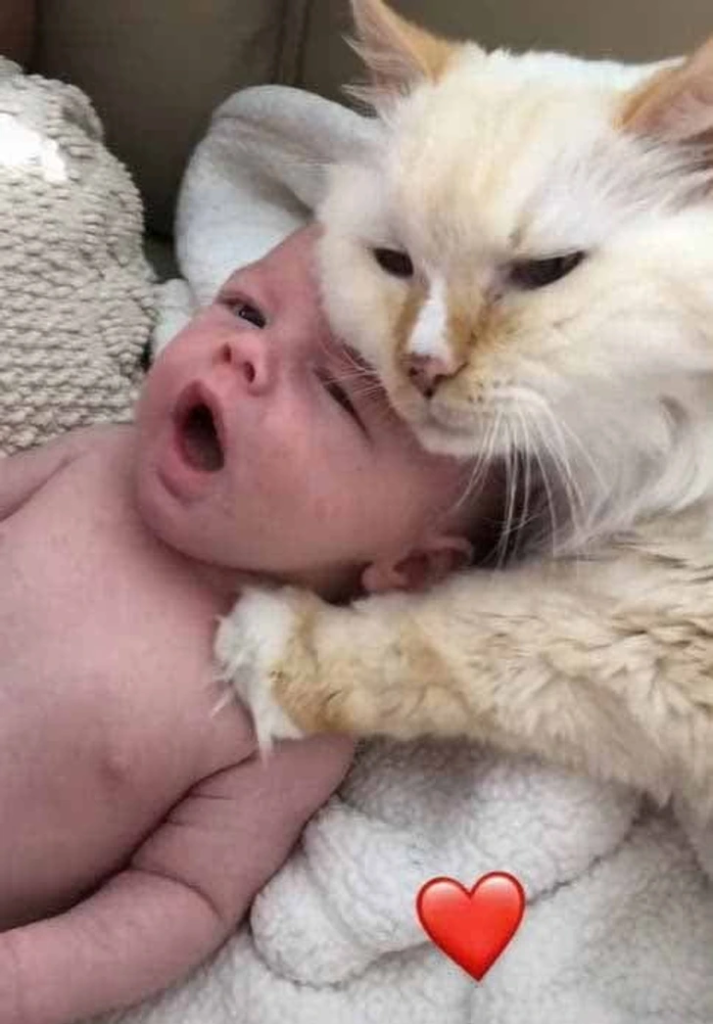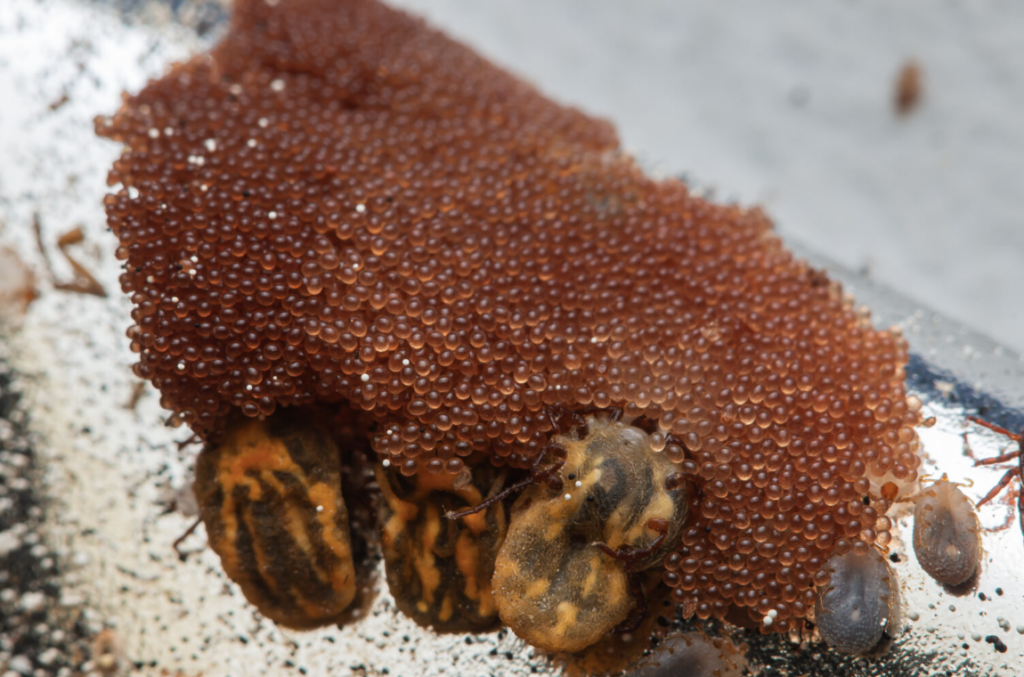In the world of pet companionship, dogs often steal the spotlight for their perceived loyalty and affection towards humans, especially babies. Cats, on the other hand, have long been labeled as solitary and indifferent. But a heartening video shared on TikTok challenges this stereotype, showcasing the remarkable bond between a protective feline named Teddy and his human baby brother, William.
A bond that started from day one.

From the moment William entered the household, Teddy, the family cat, embraced him with open paws, assuming the role of a caring and watchful «big brother.» Contrary to expectations, Teddy didn’t display an ounce of jealousy but instead showered the newborn with affection and protection, much to the delight and surprise of his owners.
Capturing these precious moments on camera, William’s parents shared their growing friendship on TikTok, where it quickly gained attention from viewers worldwide. In the videos, Teddy is seen gently interacting with William, ensuring his safety and even playfully engaging with him in his baby seat. It’s evident that Teddy sees William as his own, forming an inseparable bond that transcends species.
One video went viral.

William and Teddy’s TikTok videos are a massive hit, with one in particular reaching almost 12 million views. Witnessing the cat’s tender and affectionate behavior towards the baby brings joy to all who watch their interactions. Whether it’s sleeping next to him, keeping watch over his dreams, or delicately holding him with his paws, the cat’s unwavering commitment to the baby is evident. Refusing to leave his side, the cat seems to intuitively understand the fragility and vulnerability of the little one, embodying a protective presence that touches the hearts of all who witness their bond.
Happy comments flooded in.

The touching videos shared by William’s parents evoke a range of emotions from viewers, with many expressing admiration for Teddy’s unwavering devotion to his baby brother. Comments flooding the videos reflect the universal appeal of their bond, with some jokingly suggesting that William may have become Teddy’s surrogate. «Could anything be more precious?» one user mentioned. Indeed, Teddy’s nurturing instincts and affectionate behavior have earned him the title of a first-rate babysitter in the eyes of his adoring fans.
While others worried about the cat and baby close together.

Some people expressed concerns about allowing pets near newborns. In one of the videos, we can see comments saying «Please be careful.» Allowing cats near babies is a matter of personal choice and depends on various factors, including the temperament of the cat, the health and safety concerns of the baby, and the supervision provided by the parents or caregivers.
While many cats can coexist peacefully with newborns and even develop strong bonds with them, it’s essential to exercise caution and take appropriate precautions to ensure the safety of both the baby and the cat. However, Teddy and William’s interactions challenge preconceived notions about cats’ personalities and showcase the depth of empathy and compassion these creatures are capable of displaying.

As Teddy continues to watch over William, offering comfort and companionship in his own feline way, their story serves as a heartening reminder of the transformative power of love, transcending boundaries of species and age. In a world often divided by differences, the pure and unconditional bond between a cat and a baby provides hope and warmth, reminding us of the inherent goodness that exists within us all.
Preview photo credit williamandteddy / TikTok, williamandteddy / TikTok
Unwanted Guests in Your House: The Troublesome Insects

Being a homeowner requires you to live with some unpleasant guests. Don’t worry, we’re not talking about strange people hiding in your crawlspace. In actuality, we are discussing annoying insects that you might encounter. Let me begin by stating that, although I’m sure a lot of you share my sentiments, I personally detest having earwigs, spiders, or ants live in my house.
Still, there is nothing we can do about it. These small critters don’t see it as a planned home invasion, at least I hope not. It’s just where they should be. Even though I’ve learned to tolerate the most of the insects that have taken up residence in my walls, ticks are one pest that I simply cannot stand.

I’m willing to bet that no one finds ticks enjoyable. These are truly disgusting bugs that propagate disease quickly. This makes it essential to know how to identify tick egg clusters and what to do in the event that you find them in your grass. Thankfully, we’ve gathered some useful information to help us respond to your urgent questions.
Identifying Tick Eggs
Tick eggs are roughly the size of a poppy seed and are so little that they are almost invisible to the human eye (0.5mm in diameter). They are translucent and frequently have an oblong or pear shape. They are usually seen in clusters attached to plants, leaves, or other surfaces close to the ground.
As they age, these eggs become more opaque and smoother. They feel shiny and may be light brown or pale yellow in hue.
What to Do If Tick Eggs Are Discovered
Panic ensues when you find what looks like a clutch of tick eggs. Unless I’m alone, tick eggs are a major issue. Because ticks can transmit illnesses like Lyme disease and Rocky Mountain Spotted Fever, it is best to safely remove the eggs.
Consult a local veterinarian or a professional pest management specialist for correct diagnosis and guidance on what to do next.
Keeping Your Yard Tick-Free
Nobody like finding tick eggs in their backyard or any other yard, it’s a fact. It is therefore essential to take action to lessen the possibility that they will be present.
Since ticks love to feed on deer, being preventive includes getting rid of plants that attract deer. These kinds of plants include tulips, azaleas, and hostas. You can also grow herbs and plants that repel ticks, such rosemary, mint, and chrysanthemums.
It’s also important to keep your yard well-groomed and remove any foliage that could serve as a tick hiding place. Additionally, keep wood piles off the ground since ticks like to lay their eggs in moist, dark places.
Using natural tick repellents and adopting preventative measures to keep small mammals like mice and rabbits out of your garden will also help you achieve tick-free yards. If required, insecticides are an alternative, but proceed with caution at all times to preserve the habitat.
Did you know what tick eggs were? Please share this information with your family and friends if you believe they would benefit from it.



Leave a Reply